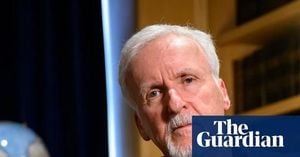As the autumn of 2025 unfolds, the Trump administration is weighing two high-stakes interventions that could reshape the global landscape for farmers and foreign economies alike. With U.S. farmers bracing for a difficult harvest amid aggressive tariff policies and Argentina’s government teetering on the edge of a financial crisis, President Donald Trump’s team is considering unprecedented bailout measures at home and abroad—each with far-reaching consequences.
On the domestic front, Agriculture Secretary Brooke Rollins confirmed on September 22 that the White House is actively considering a bailout program for U.S. farmers, potentially funded by tariff revenue. According to Financial Times, Rollins stated, “There may be circumstances under which we will be very seriously looking to and announcing a package soon,” noting that using tariff income to pay for it was “absolutely a potential.”
This comes at a time when American farmers are facing a double whammy: fewer export opportunities and rising costs for essential equipment. The Trump administration’s tariffs—more than 15% on self-propelled farm machines like tractors and nearly 25% on herbicides and some pesticides—are partly the result of ongoing trade disputes with Canada, as highlighted by the North Dakota State University Agricultural Trade Monitor. Major agricultural machinery manufacturer John Deere reported a staggering $600 million loss in fiscal year 2025, directly attributing it to these tariffs.
The pain isn’t limited to equipment makers. Retaliatory tariffs from China have dealt a severe blow to U.S. soybean farmers. Chinese tariffs on American soybeans have soared to 34%, pricing them out of the Chinese market just as the autumn harvest approaches. The American Soybean Association reported in August that these retaliatory tariffs have “blunted U.S. soybean growers’ advantage, restricting their access to the very market where demand is growing fastest.” Soybean exports to China once accounted for more than 20% of the U.S. crop, but that market is now dominated by Brazilian beans.
Yet, not all farmers are united in their opposition to tariffs. Some, like shrimp farmers in Indiana, view the levies as a shield against cheap foreign competitors. Their support for Trump’s trade measures reflects the complex patchwork of interests in American agriculture.
Meanwhile, the U.S. Department of Agriculture (USDA) has not shied away from criticizing the previous administration. According to Fortune, the USDA claims that President Joe Biden inherited a robust farm economy but “erased” Trump’s efforts to keep interest rates low and open new markets, resulting in a $50 billion agricultural trade deficit. While agricultural exports hit a record high in 2022 under Biden, imports overtook exports by $21 billion in 2023, underscoring the volatility in the sector.
Despite these challenges, the USDA remains cautious about further interventions. A spokesperson told Fortune, “We are constantly assessing the farm economy and exploring the need for further assistance but have not made a determination if an additional program is needed at this time.”
Experts warn that any Trump administration bailout may only provide temporary relief. Wendong Zhang, an associate professor at Cornell University’s SC Johnson School of Business, explained to Fortune, “It will compensate for the immediate economic losses due to tariffs, but it doesn’t necessarily improve the long-term competitiveness of agriculture on the global stage.” Zhang noted that a similar pattern played out after the first round of Trump’s tariffs in 2019, when U.S. farmers lost $27 billion in exports and received $28 billion in subsidies. The market damage, however, lingered long after the checks were cut.
Despite the long-term risks, many farmers remain steadfast in their support for Trump’s approach. Zhang’s 2019 study found that more than half of farmers in Minnesota, Iowa, and Illinois backed the tariffs, even though 76% acknowledged they would lose money and over 60% admitted U.S. agriculture would lose markets. Their support, it seems, is rooted as much in politics as in economics.
This time, the stakes could be even higher. Unlike Trump’s first term, when tariffs mostly targeted China, the current measures involve a broader array of countries and products. “There’s so many players, products, and moving parts that…it’s really hard to know which ones will be affected,” Zhang remarked, highlighting the unpredictability of the current trade environment.
While U.S. farmers await clarity on domestic aid, the Trump administration is also turning its attention to South America, where Argentina’s economy is in freefall. Earlier this month, Argentina’s libertarian president Javier Milei’s party suffered a bruising defeat in Buenos Aires province, winning just 34% of the vote against the Peronist Fuerza Patria coalition’s 47%. The surprise result, compounded by a corruption scandal, sent shockwaves through Argentina’s financial markets. A key government bond due in 2029 plunged by 15%, and the central bank was forced to spend $1.1 billion in just three days to defend the peso as investors fled en masse.
In response, the U.S. intervened with $678 million—one of the largest such moves in decades. Treasury Secretary Scott Bessent announced on September 22 that a “large and forceful” bailout is on the table, with discussions reportedly covering more than $8.5 billion in Argentine debt due in January and July of next year. According to Paste Magazine, Bessent emphasized that U.S. support is reserved for allies who “do the right thing, follow good policies, and are aligned with the values of the United States.”
Argentina has already drawn $20 billion from the International Monetary Fund in 2025, and Bessent said further U.S. assistance could include swap lines, direct currency purchases, and buying U.S. dollar-denominated Argentine government debt from the Treasury’s Exchange Stabilization Fund.
Argentina’s economic woes are hardly new. The country has battled inflation on and off since the 1930s, with the latest crisis rooted in government manipulation of inflation data in the mid-2000s. Milei, elected with a mandate to tame runaway prices, has managed to bring inflation down somewhat, but the recent political turmoil has reignited fears of instability.
The Trump administration’s willingness to back Argentina is seen as both a strategic and ideological move. Milei is a close ally of Trump, and the U.S. is sending a clear signal: support is available for those who align with American interests and policy preferences. As Bessent put it, “We are willing to provide assistance when things move out of equilibrium.”
Both the proposed farmer bailout and the Argentine intervention highlight the Trump administration’s readiness to wield economic power in defense of its allies and domestic interests. But as experts and critics alike caution, the long-term effectiveness of these measures remains far from certain. The coming months will test whether these bold gambits can deliver stability—or if they simply paper over deeper vulnerabilities in the world’s agricultural and financial systems.
For now, as farmers and foreign governments await word from Washington, uncertainty reigns. The choices made in the corridors of power will ripple far beyond America’s heartland and the streets of Buenos Aires, shaping livelihoods and alliances for years to come.




